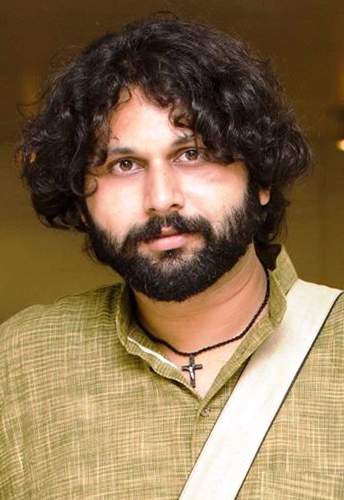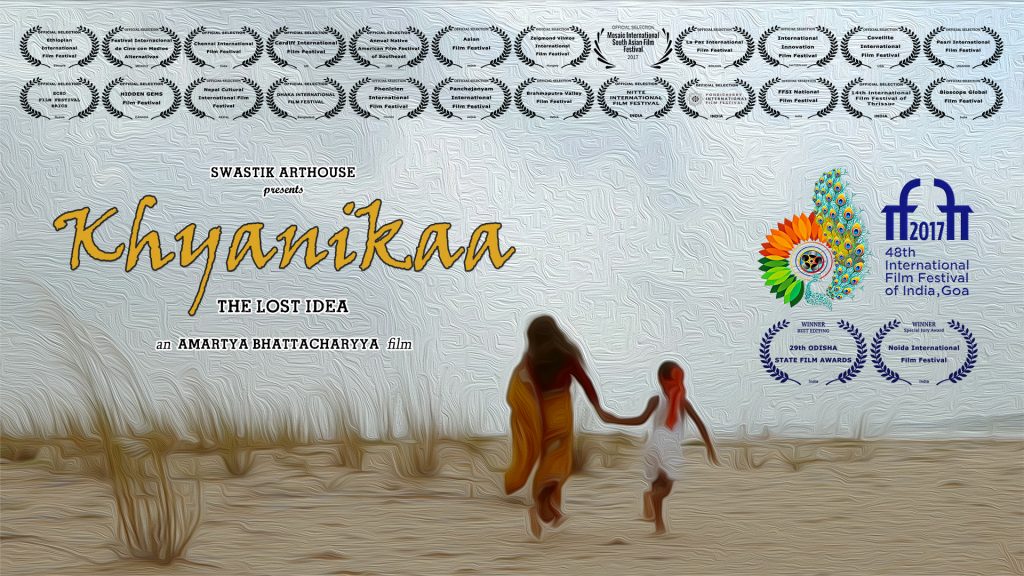Amartya Bhattacharyya is not only an independent film director, but also a poet, writer, cinematographer, editor, painter, actor, lyricist, recitation artist and photographer. He has won the National award for Best Cinematography for his fantasy documentary ‘Benaras – The Unexplored Attachments (2015) at the 63rd National Film Awards. He also won the award for Best Editing for his Odisha feature film, Khyanikaa – The Lost Idea (2017), at the 29th Odisha State Film awards. The film travelled extensively to several film festivals the world over as well. His first Bengali feature film, Runanubandha –The HE without the HIM (2019) premiered at the 41st Moscow International film festival and was featured at the Festival des Cinemas Indiens de Toulouse in the Competition Section besides being screened at the 24th Kolkata International Film Festival among several others.
Khyanikaa – The Lost Idea is a powerful statement that comes from the poet in Amartya where ‘idea’ takes the form of a beautiful woman, a young man falls in love with. But like all abstract ideas, this beautiful young woman is also like a will-o-the-wisp, fluidly floating from place to place and not anchoring anywhere. There is an old man in a wheelchair pushed by a crazy old man to a dilapidated home to deliver lectures to a batch of imaginary students. The crazy man wants a fishing net to catch the sun and he does catch the sun that angers the villagers because the place has remained in darkness for three days and three nights. Though the presentation is abstract, one can discover several storylines within the complex, poetic structure.
“Linear progression doesn’t interest me. A key reason I did not like cinema initially was its linearity. I think it over-simplifies an idea and does not give space for a viewer to participate.” Bhattacharyya says when asked to elaborate on the non-narrative structure of his films that are entirely abstract and often ambivalent and vague. A self-taught filmmaker whose films have been to many film festivals, Bhattacharyya was shocked when he heard that Khyanikaa – The Lost Idea, released on Prime Video (Amazon), was subsequently pulled down by the streaming site because it is in Odia, which does not fall within the nine Indian languages they are within the rules to stream.
The film released on Prime Video across global territories and India on June 6 this year. But on June 8, an Amazon official directed the distributor to take the film down immediately. The distributor, an authorised Amazon partner, denied any such criteria on the basis of language mentioned in the publishing guidelines sent by Prime Video. “Then how is it that they released the film in the first place knowing that it is in Odia? Or, did they not read the documents properly to note the language? If yes, then the mistake lies with them, not with us.” says the director. “If such a guideline does exist, then why were we not informed about it earlier when we submitted the film for streaming?” he asks. “Strangely, however, this pulling down is only in India and it is available for watching on Prime Video in other territories. Why? True, that this will bring international exposure to the film. But does any filmmaker desire such exclusion? Does he not want his home audience to watch his film?”
The written confirmation from the distributor, the go-between the producer and the streaming site, states: “Though your title meets the guidelines there was no reason said for the removal of your title officially even after publishing. We were warned not to publish Oriya titles in Amazon Prime Video.” The director says that there is no public information from Prime Video that mentions any language restriction for Odia language films.
Around 3,75,21,324 people of the total Indian population speak in Odia as of demographic records in 2011. It is clearly included in the Eighth Schedule of the Indian Constitution in its 22 scheduled languages set out by the Republic of India as of May, 2008. Odia also happens to be one of the six classical languages in India on the basis of having a long literary history and not having borrowed extensively from other languages. The earliest known inscription in Odia dates back to the 10th century CE.
“We have been trying to resolve this issue with Amazon Prime Video for the past one week.” says Amartya. “Khyanikaa – The Lost Idea was the only Odia film at 48th IFFI Goa in 2017, and has represented Odisha and India at around 30 international film festivals across 14 countries. It has won several awards as well. Pulling down such an acclaimed film after it was released is nothing but being discriminated against just on the basis of language and this action from Prime Video will also set a wrong precedent for Odia films in future.” he signs off.
As of now, the issue still lies unresolved. But the larger question remains. Doesn’t cinema come above language?




“Around 37.5 per cent of the total Indian population speak in Odia as of demographic records in 2011.”
Please check this. Cannot be more than 4pc.
Enjoy reading posts here, but errors like this can take away a lot of the credibility!
It has been corrected. Thanks for pointing it out.
Excellent